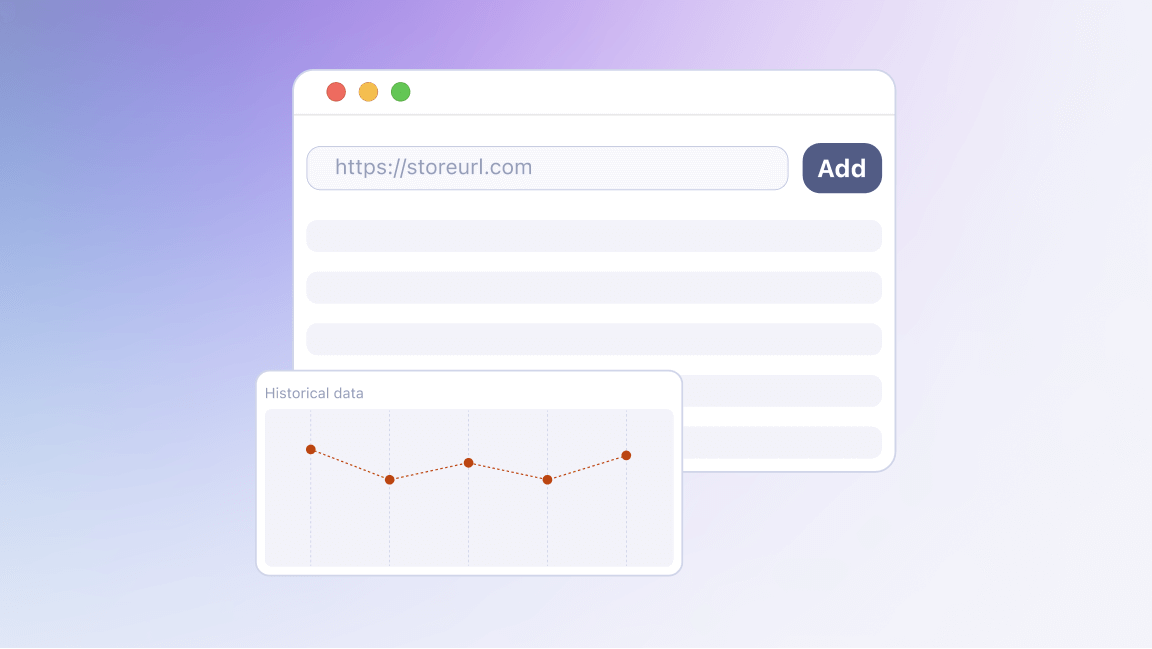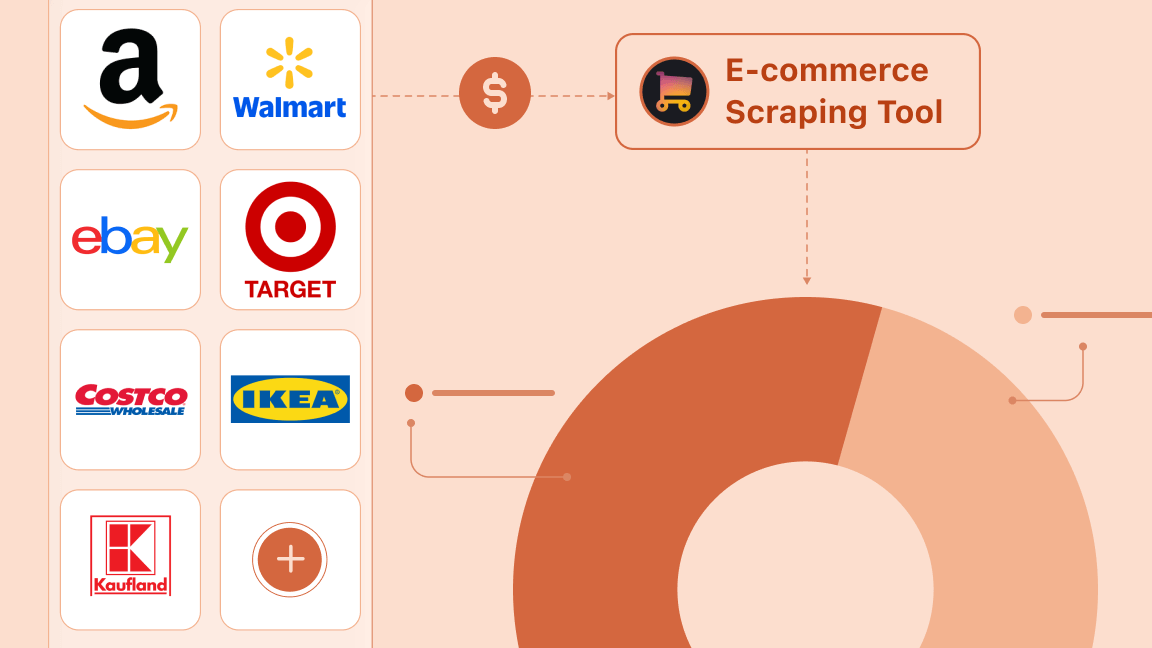This is a guest post by Elea Andrea Almazora from RingCentral US.
Gathering relevant data on customers that may have an interest in your products is crucial to your business success, but using a hit-or-miss method to collect this information is inefficient. Methods like buying email lists fall into this category. A sizable portion of the contacts on the average email list will be of no use for your products or services.
Most likely, you have competitors in your field and they are making moves to get ahead of you. You’re each competing for the same customer base. So, why rely on a hit-or-miss approach to try and gain an advantage?
For e-commerce platforms, one of your goals is to generate leads and turn them into conversions. The challenge is choosing the best way to get them in the first place. Sure, you can run ads, create funnels, or launch email campaigns, but there are too many uncertainties with this type of scatter-gun approach.
For starters, customers may choose not to respond to your email campaigns or receive your emails. However, you can generate targeted leads with ease - so long as you have the right data and an effective email design that captures attention and encourages engagement.
But how can you get this information? The answer is through data scraping (what experts call ‘web scraping’). Data scraping means extracting information from websites and saving this into a designated folder onto a secure cloud storage or computer.
There are many ways you can apply web scraping to your business. You may even already be doing it. If you regularly browse other websites for information and data. If you get business news, content ideas, and monitor price information on the web. These are all forms of data scraping.
This process generates relevant information about your target market. With it, you can extract credible leads for your business. Here’s our brief guide on how it works.
Our step-by-step guide to web scraping
Right now, you may feel like the last person to find out about the advantages of web scraping, but that doesn’t mean you can’t enjoy them.
Here’s a step-by-step guide to using web scraping to generate leads for your business.
- Crawl public sources like Twitter, Reddit, and Yell for sales leads.
- Gather data from relevant groups. You need to use specific parameters to determine your target population. Using effective customer segmentation tips will help you isolate your preferred demographic.
- Filter and refine your collated data. Do this to ensure the integrity of the information you have. Refining data manually is a tedious process, however, so use a computer program to do the job.
- Analyze your refined data to get actionable insights. Data refinement is easier when you invest in project management solutions with data analysis capabilities.
- Create marketing strategies and campaigns tailored to your target population using this data. Also, ensure you regularly modify strategies to fit the changing market.
A common web scraping mistake
Many people imagine data scraping involves taking information from the internet and putting it into a spreadsheet.
While it does mean getting info online, putting customer information in a spreadsheet is a bad idea. That’s unless you’re gathering a relatively small volume of data. If you’re managing large data banks, it’ll be too cumbersome to handle in this way.
It’s better to use cloud storage to store your data and organize the process with productivity management software. This way, it’s easier to filter and refine. Some productivity tools offer additional analysis functions, but in most cases, you’ll need analysis software to properly analyze the information you have.
Common e-commerce web scraping challenges
Web scraping has many benefits, but if you do not channel it correctly, you won’t be able to take full advantage. Ineffective web scraping often stems from challenges you will encounter during the process. This is especially true when using scraped data for lead generation, where accuracy and freshness of information are critical.
Below, we discuss four key e-commerce web scraping challenges and how you can manage them.
1. Changing website formats and web page structures
One of the interesting things about the web is the flexibility it allows designers. When setting up a site, designers have the freedom to structure it as they wish — as long as they do it according to the specifications of the website owner. This is often the result of a custom website design and development process that tailors the site to specific business needs.
This means e-commerce web design is a product of the creativity of the designer and that these website designs can be incredibly fluid. The site owner can make upgrades or change website structures at the drop of a hat. Collaborating with an experienced e-commerce development company can help ensure that your store’s structure remains both visually appealing and technically stable, which also makes future web scraping and data extraction smoother.
Due to this freedom, most websites have varying structures and page layouts. You'll find sites in the same niche that provide the same types of products or services, nonetheless look very different. While there’s nothing wrong with the variances in website structure, it can constitute a challenge for web scrapers.
If the website uses ongoing SEO services, it will get regular updates. These will most likely lead to changes in structural elements. Crawling such websites based on the old structure will lead to collecting insufficient, irrelevant, or duplicate data. In a worst-case scenario, it may be a mixture of the three. Your data scraper could even crash if it's not able to handle the workload.
In most cases, you should be able to fix the problem by making adjustments to the scraper code. However, if you make the wrong adjustment, this could lead to further problems.
So, the best solution is to exercise patience while learning and developing scraper codes to cope with changing websites. Alternatively, you could hire custom web scraping services to handle it for you.
For those who are new to e-commerce, there are online resources available to learn how to create an e-commerce store with a user-friendly structure, making it easier to manage data scraping in the long run
2. Large-scale extraction
Large-scale data extraction often poses a major challenge during web scraping. Imagine an e-commerce platform with 15+ subcategories under one major category. Say the platform has at least 20 core product categories, then imagine trying to extract data about all of the items under all the subcategories. That sounds like a long week at the office.
But it doesn't end there. Think about the work it’ll take to filter and refine all of that data using a spreadsheet. After that, you need to analyze the data to get actionable insights or whatever other information you need. It all seems very impractical.
You can overcome this challenge in one of two ways. The first option is to create an in-house team of individuals to gather and analyze data for you. However, the work will be tedious and quite monotonous for them.
The other option is to use a web scraping tool. While using the web scraping tool, an in-house team will be in charge of ensuring the tool gathers quality data. Just like we can't teach you how to run a marketing department, you can’t teach them what tools to use. Their experience and expertise should make the decision for you.
3. Poor data quality
The whole point of web scraping is to get relevant data and information. As such, it becomes a problem when you're gathering data but it’s not useful for your marketing goals. This can be disappointing, but it's a major challenge you should be prepared to face while web scraping.
Initially, the scraper will gather data in a manner that lacks structure or cohesion. Scattered data is normal because a web scraper gathers data from different sources. There is the risk of duplicate data, irrelevant data, or even untrue information. All of these are fluff and will be useless to your goals.
Ensuring data quality during data scraping involves two important steps. The first is doing a quality check on the performance of the data scraping bot. This will help you ascertain the efficiency of the bot and allow you to make necessary modifications. The second is using another tool or automated system to double-check data gathered by the scraping bot.
However, developing and maintaining such systems require money, time, and other resources. You may want to consider hiring third-party professionals to handle this job for you. It’s often cheaper that way, and you can focus on other aspects of your business.
4. Captchas and anti-scraping programs
Data scraping is not illegal or prohibited under any law governing the web. However, as much as possible, every website owner likes to protect their data.
The idea of an unknown entity mass extracting as much information as they can get from a website can be a concern, so web owners may use captchas and anti-scraping tools to prevent scraping bots from accessing their data.
Most websites refuse bot access, while others detect and blacklist IP addresses showing irregular activities. Some website managers go as far as setting digital traps to trick bots and block their access.
There are advanced bots that can recognize and work around these boundaries. The blocking attempts above run on certain codes that these bots can recognize and bypass. You can also use IP proxies, IP rotation, and session management to bypass anti-scraping software.
Scrape the web with zero obstacles
These are a few of the common challenges you’ll encounter while scraping for data. However, they’re easy enough to counter thanks to the solutions we suggested.
Note that there are limits to your data scraping efforts, though. You can't get data from cloud storage, for example, but you can get all you need from the public web. Analyze and plan what needs to be done before your massive task using the Top Video Collaboration Tools: Modern Conferencing For A Modern Workplace. It’s better to be prepared than struggle towards the end. Good luck!
Elea is the SEO Content Optimization manager for RingCentral, the leader in global enterprise communication solutions on the cloud. She has more than a decade's worth of experience in on-page optimization, editorial production, and digital publishing. She spends her free time learning new things.






